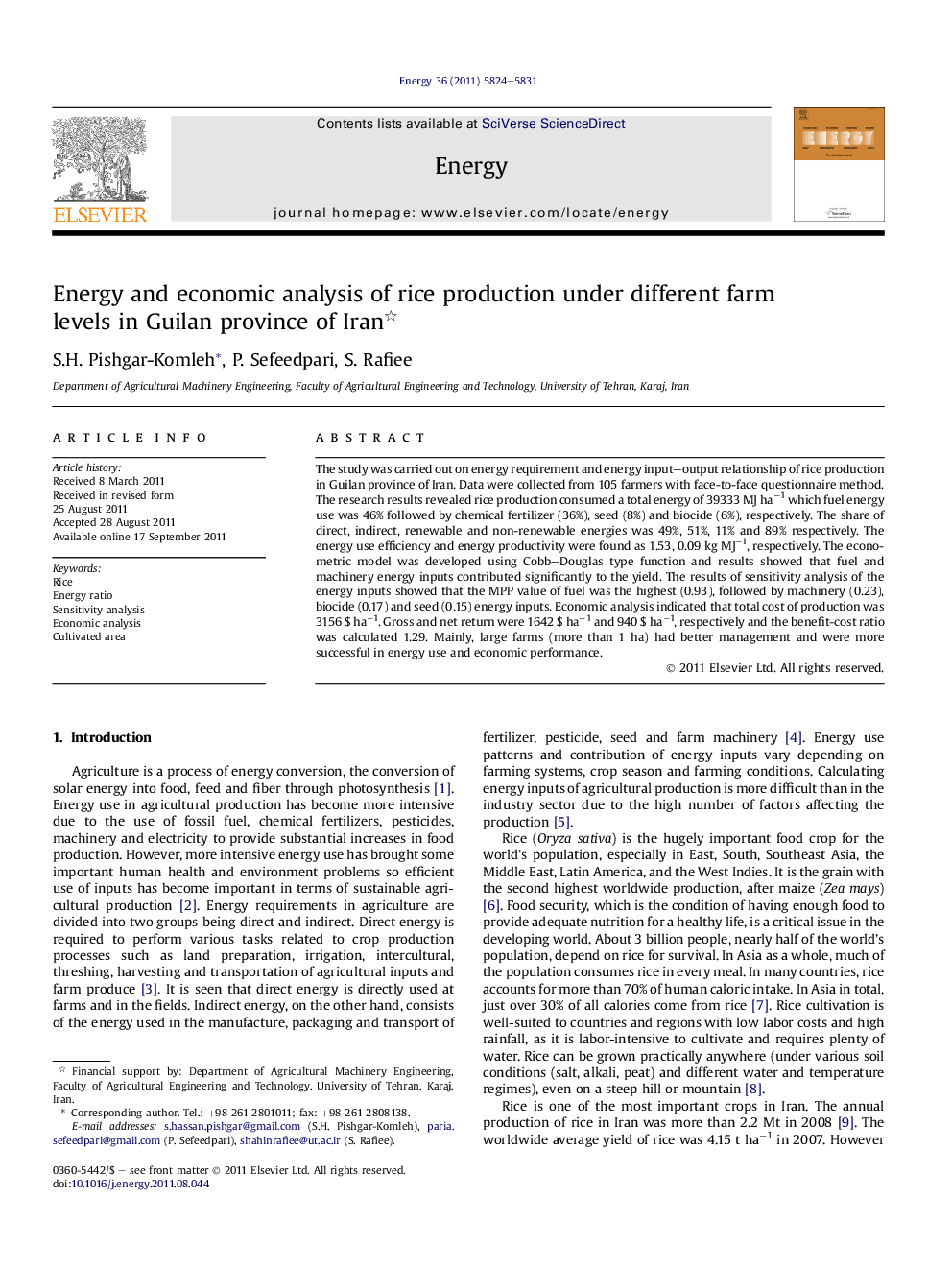| Article ID | Journal | Published Year | Pages | File Type |
|---|---|---|---|---|
| 1733987 | Energy | 2011 | 8 Pages |
The study was carried out on energy requirement and energy input–output relationship of rice production in Guilan province of Iran. Data were collected from 105 farmers with face-to-face questionnaire method. The research results revealed rice production consumed a total energy of 39333 MJ ha−1 which fuel energy use was 46% followed by chemical fertilizer (36%), seed (8%) and biocide (6%), respectively. The share of direct, indirect, renewable and non-renewable energies was 49%, 51%, 11% and 89% respectively. The energy use efficiency and energy productivity were found as 1.53, 0.09 kg MJ−1, respectively. The econometric model was developed using Cobb–Douglas type function and results showed that fuel and machinery energy inputs contributed significantly to the yield. The results of sensitivity analysis of the energy inputs showed that the MPP value of fuel was the highest (0.93), followed by machinery (0.23), biocide (0.17) and seed (0.15) energy inputs. Economic analysis indicated that total cost of production was 3156 $ ha−1. Gross and net return were 1642 $ ha−1 and 940 $ ha−1, respectively and the benefit-cost ratio was calculated 1.29. Mainly, large farms (more than 1 ha) had better management and were more successful in energy use and economic performance.
► The energy and cost analysis of rice crop in Iran (Guilan province) was determined. ► It was aimed to discover the effect of farm size levels on energy inputs use. ► The total energy input and output were 39.33 and 60.3 GJha−1 respectively. ► Fertilizer and diesel fuel were the highest energy consumers. ► Fuel and machinery had the most significant impact on rice production.
